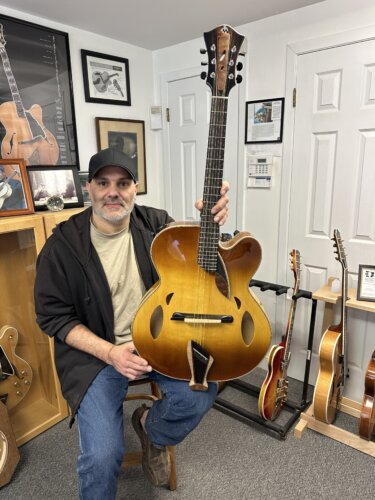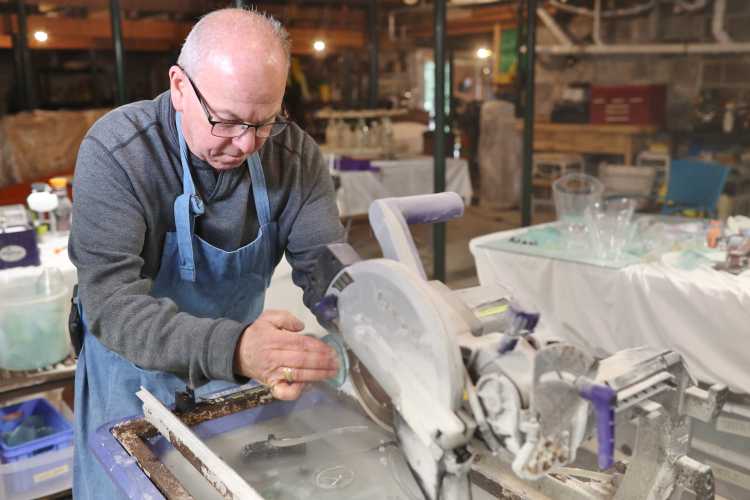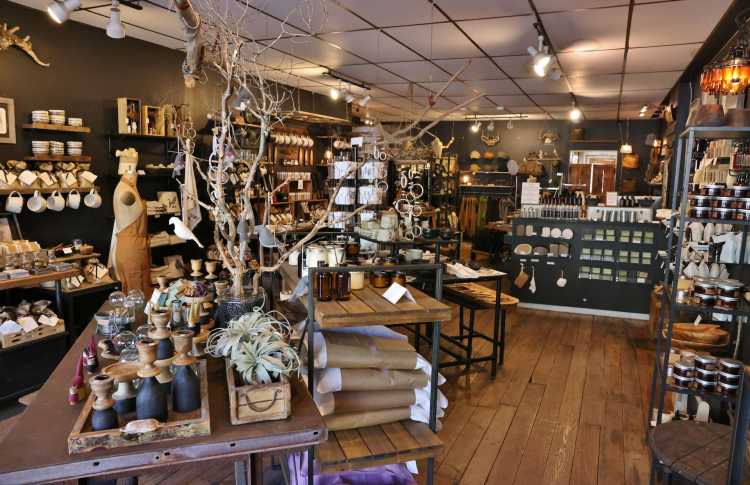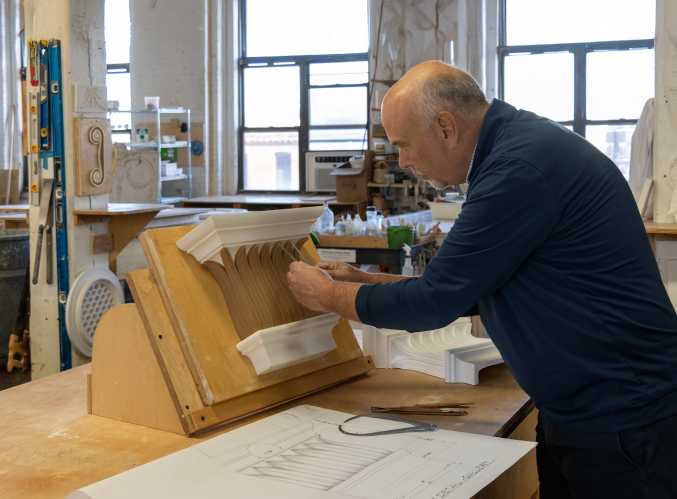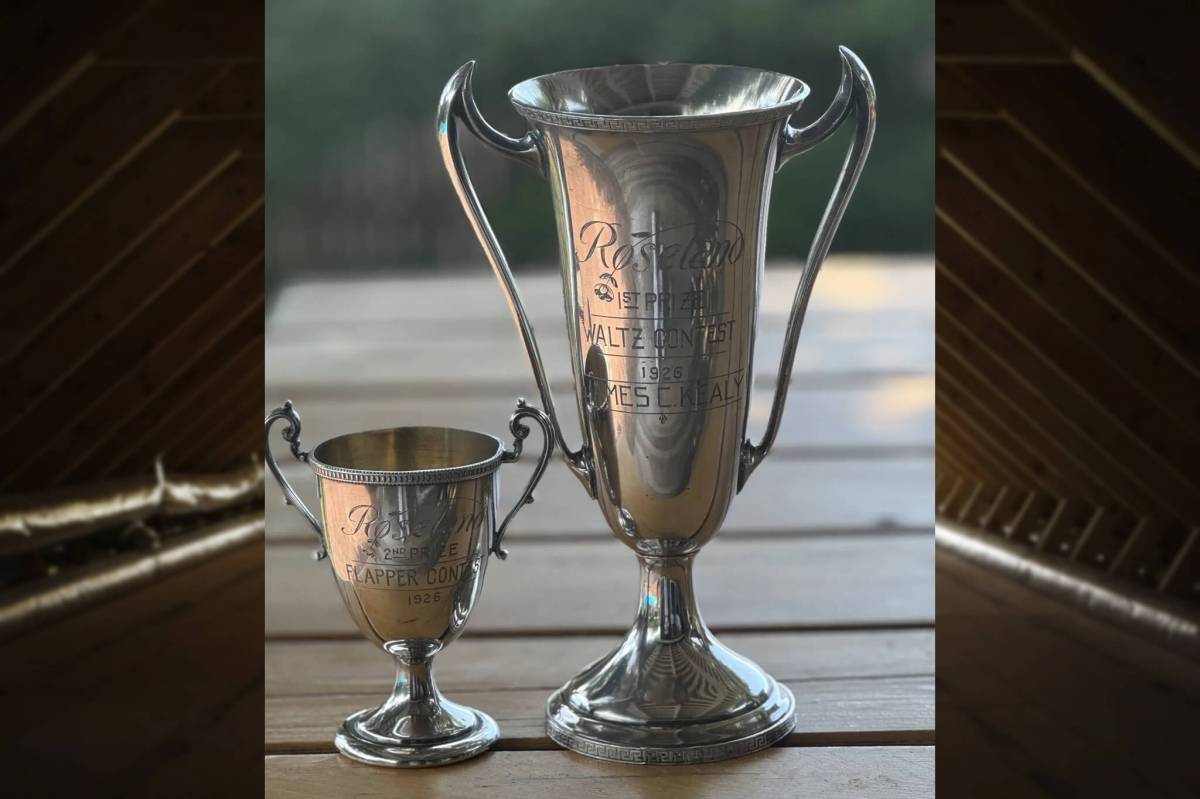It takes Cris Mirabella about a year to make a guitar. The process is often a collaborative one, particularly when he’s creating an instrument for a working musician. The future owner might help Mirabella select the slabs of European maple, spruce or macassar ebony that will ultimately become the guitar’s neck and body. Or they might ask for subtle adjustments to, say, the voicing of the upper midrange frequencies. Virtuoso jazz guitarists might even be looking for a specific yet elusive “feel” as their fingers dance up and down the fretboard.
In other cases, Mirabella’s clients, particularly guitar collectors, prefer to let the Long Island luthier do his thing with relatively minimal input. There’s no predetermined cadence when you’re creating handmade musical instruments that routinely sell for as much as a Tesla.
Regardless of how the creation process plays out, eventually it’s time for Mirabella to place the guitar in the hands of its new owner.
But before that happens, “there’s one — and only one — moment that’s entirely mine,” he says.

“I play the first chord on the finished guitar for the first time, and for the duration that chord lasts, I’m not missing anything,” he observes. “Nothing’s wrong anywhere in the world for that second. It’s the divine light shining down on you saying, ‘Don’t worry. Keep doing what you’re doing.”
Working by appointment out of a small shop in St. James, Mirabella approaches the luthier’s art with a focus – a purity of purpose – that’s rare even among master craftsmen.
“My father used to say, ‘Do something great. Make them remember our name,’” Mirabella says. “He’d tell us to be great, ‘not because you have to, but because you can.’”
Given his lineage and the events that shaped Mirabella’s formative years, it’s easy to argue that he was destined to become a luthier.
His father, Frank Mirabella, was an Italian immigrant who settled in New York City, where he studied at Julliard and played piano and classical guitar. Choosing a more secure livelihood over a career in the arts, Frank moved his family to central Long Island, where he worked for Grumman Aerospace on various contract engineering projects for NASA and helped design the Apollo Lunar Excursion Module (LEM) that ultimately touched down multiple times on the face of the moon.
Like his father, Cris Mirabella demonstrated an affinity for both music and engineering – two disciplines that must work in harmony when building a guitar from scratch.
A tremendously influential figure in his son’s life, Frank Mirabella died from cancer when Cris was only nine. Though Frank Mirabella’s life and death cast a long shadow, Cris’s path to becoming first a musician and ultimately, a luthier, wasn’t forged by the classical music his father loved so much. It was born out of rock and roll.

Mirabella would ultimately specialize in restoring and later, building archtop jazz guitars, but he credits legendary rock players Jimmy Page (Led Zeppelin), Tony Iommi (Black Sabbath) and especially Jimi Hendrix, with changing the arc of his life.
Very soon after Mirabella’s father died, his older cousin gave him a small collection of classic rock records. Listening to those records set him on a four-decade path of discovery.
“It was almost a divine intervention,” Mirabella says. “I was a nine-year-old kid who had lost his father. I was angry and I hated everything. I didn’t want to talk to anybody. Jimi Hendrix’s guitar sounded like a different language to me – a way to say what I wanted.”
By the time he turned 10, Mirabella had already used his paper route money to buy his second guitar, a used 1979 Fender Stratocaster, arguably the most iconic electric guitar in the history of rock and roll.
When Mirabella first began playing the Stratocaster, it didn’t sound great to his young but discerning ears. His guitar teacher explained that the Strat needed a set-up, a process where guitar technicians perform a series of specific adjustments to enhance the playability and sound quality of the instrument.
His teacher sent Mirabella to a shop in Amityville for a set-up, where he learned that even a world-class guitar can sound dull and lifeless if not properly maintained and adjusted – a lesson that would serve him well in the years ahead.
When he went back to the store with his mother to pick up his newly set up guitar, she convinced the owner to hire her son for a part-time gig cleaning up the place.
Mirabella never looked back.
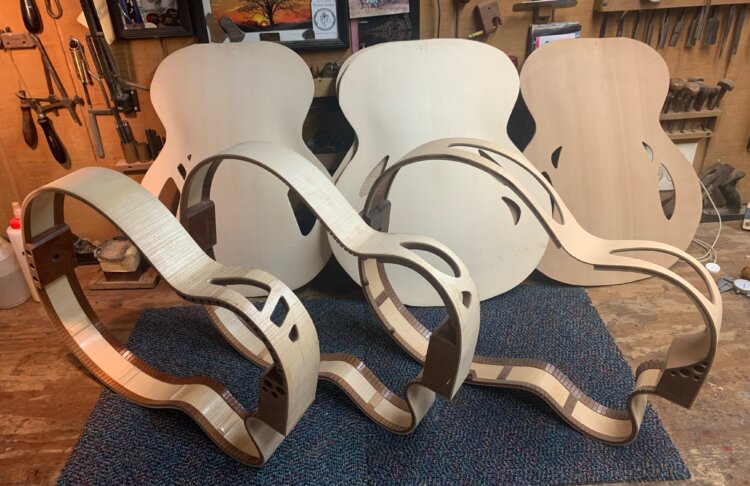

Fast forward 15 years. Mirabella, now in his mid-20s, was still working at the shop. He’d been living and breathing guitars for a good chunk of his childhood and his entire adult life. He’d practiced for countless hours and taken instruments apart and put them back together a thousand times over. He’d even built a solid body electric guitar to the shop’s specifications for display at NAMM, a musical instrument dealer trade show.
It was time to leave the comfortable confines of the shop and go out on his own. Before transitioning full-time to guitar tech work, Mirabella worked the night shift as a nurse’s assistant for about a year and a half to help make ends meet. “Besides my paper route, it was the only job I ever had outside of music,” he says.

In 1997, Mirabella Guitars was born. Mirabella rented a small space in Copiague and also worked as a contractor in local music shops repairing and restoring vintage instruments. He specialized in working with archtop jazz guitars made by the legendary New York luthier John D’Angelico and D’Angelico’s protege and successor Jimmy D’Aquisto – guitars which were prized by both musicians and collectors alike and dramatically increasing in value at the time.
The exploding value of D’Angelico and D’Aquisto archtops in the 1990s ultimately drove Mirabella to make his first eponymous guitar. A client of his, a local jazz player, had become worried about playing his D’Aquisto archtop at gigs in clubs and bars. In the jazzman’s eyes, the market had simply made the D’Aquisto too valuable to use as an everyday guitar.
Mirabella had already done extensive work on the client’s D’Aquisto archtop, so the comfort level was there. When he asked if Mirabella could make him a guitar in a similar style, the next stage of a life journey that Mirabella had been pointing toward since he was 10 years old stretched out in front of him.
“I had no doubt I could make this guy a beautiful guitar,” he remembers. “I was getting ideas faster than I could implement them.”
Four months later, the guitar was finished.
Mirabella waited as his client played his new guitar for the first time.
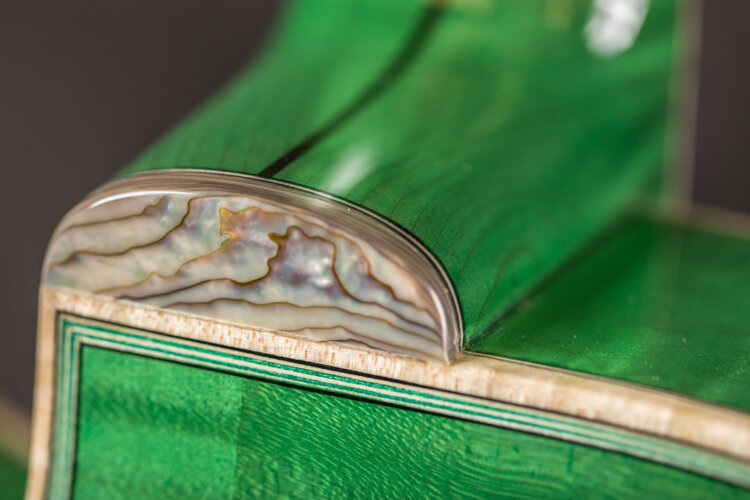
“He was playing a jazz riff, he had his head down, not saying a word. Then he grabbed some chords in the upper register. A big thing in the jazz community is the balance of notes – how equally each string voices, especially in the upper register. That balance is very difficult to achieve,” Mirabella explains.
“The guy finally looked up and smiled,” Mirabella continues. “He said, ‘Yeah, this’ll work.’ And that’s when I knew that my guitar was good enough for a serious musician to make his livelihood playing it.”
Fast forward to 2024. Cris Mirabella has built a reputation as a master luthier. His guitars are played by renowned musicians around the world and are coveted by discerning guitar collectors. If you plan to visit Mirabella in his shop in St James, don’t forget to make an appointment first. And if you order a Mirabella guitar tomorrow, you shouldn’t expect to play it in its finished form until sometime toward the end of 2026 at the earliest. Given the demand for his instruments and the amount of time he spends creating them, Mirabella’s start-to-finish delivery time has ballooned to almost three years.
For those who appreciate the work of a true artisan luthier, the wait is more than worth it. In addition to the monumental beauty, the quality of the workmanship and of course, the sound of the instrument itself, every Mirabella guitar is imbued with the essence of the person who created it.
After 25 years of making guitars, Mirabella still feels the same way when he plays one of his finished creations for the first time.
“When I play that first chord, I can see and hear everything that got me here,” he explains. “I hear my mom saying, ‘You’re really good at this guitar stuff.’ I hear my cousin saying, ‘I think you’ll like these albums.’ I hear Jimmy D’Aquisto, my mentor, saying, ‘You make a better pickguard than I do.’ All of that flashes in my brain in that first second. There’s this overwhelming amount of pride, happiness and achievement.”
This article appeared in the Jan. 19, 2024 issue of Behind The Hedges, which also is published in the Dan’s Palm Beach edition in February. Read the full digital version of the magazine online. To read previous Master Craftsman columns click here.
